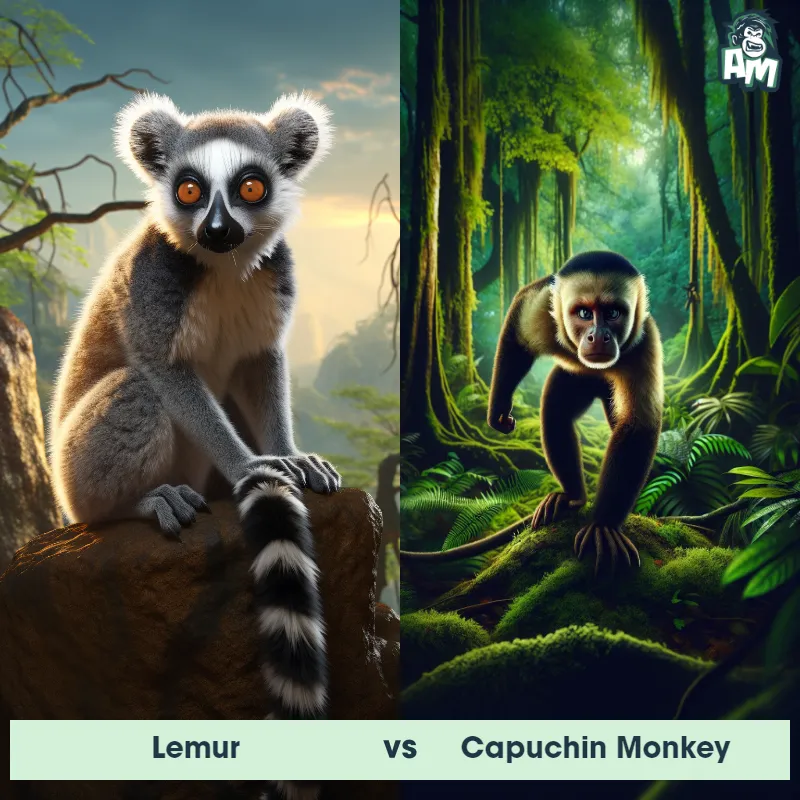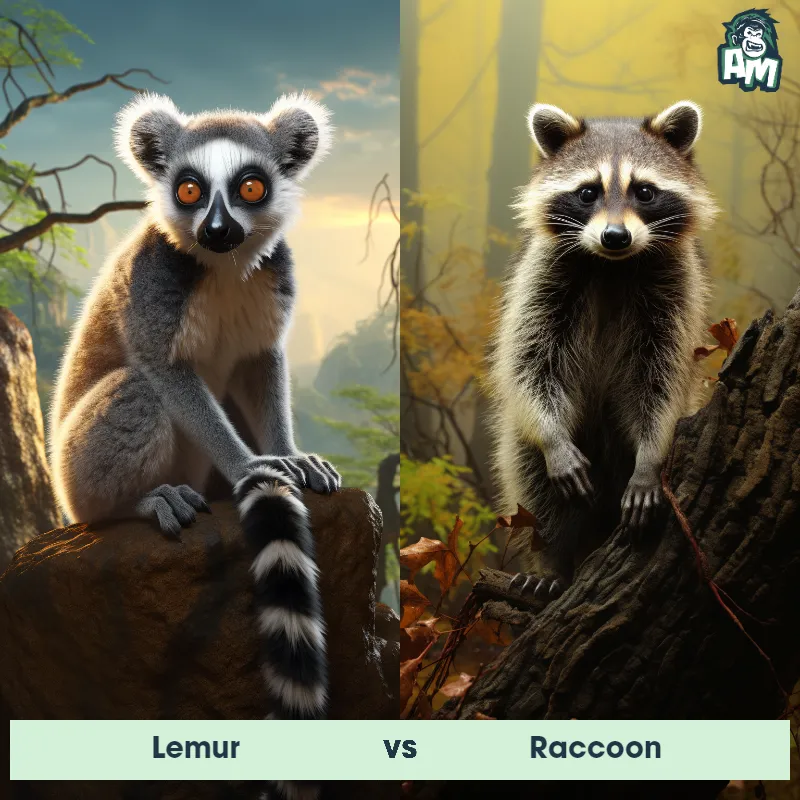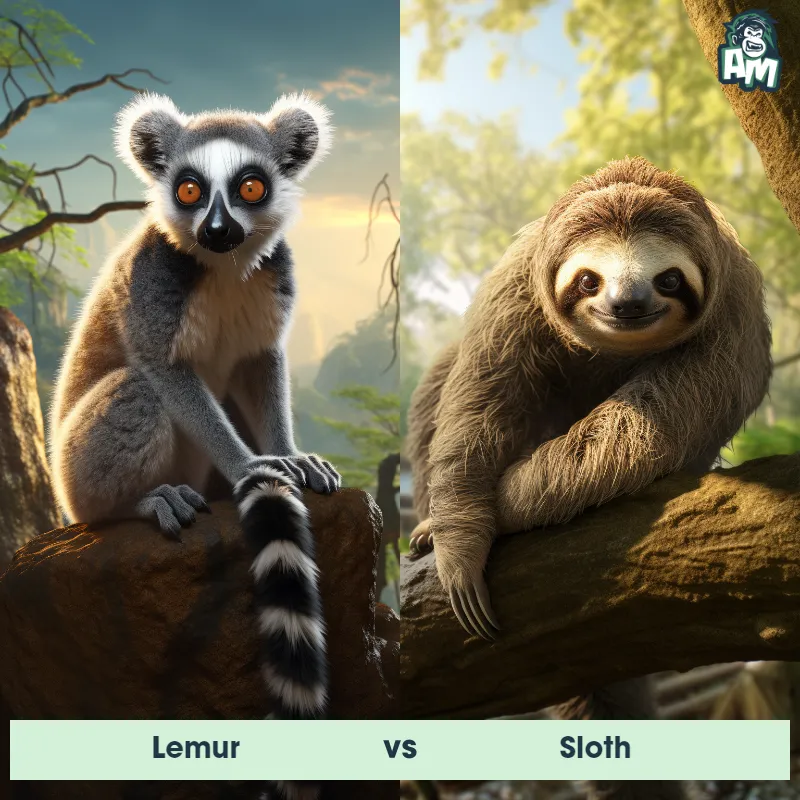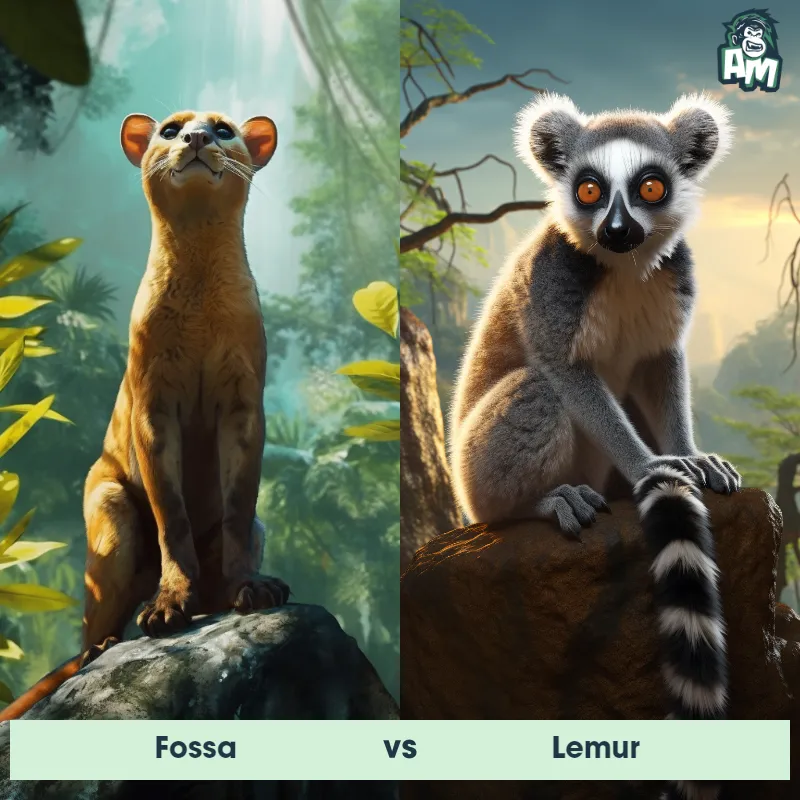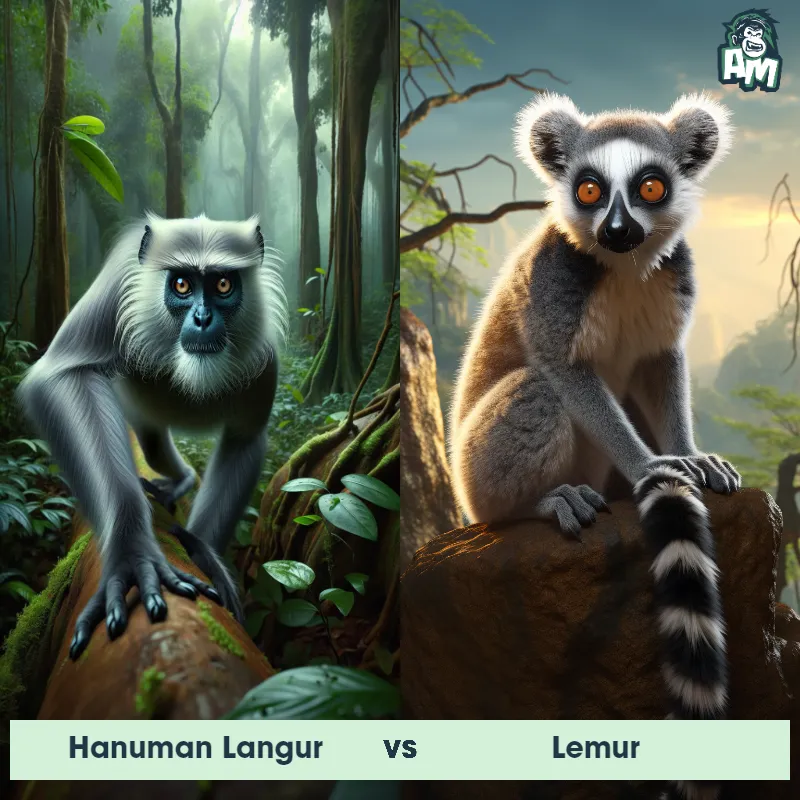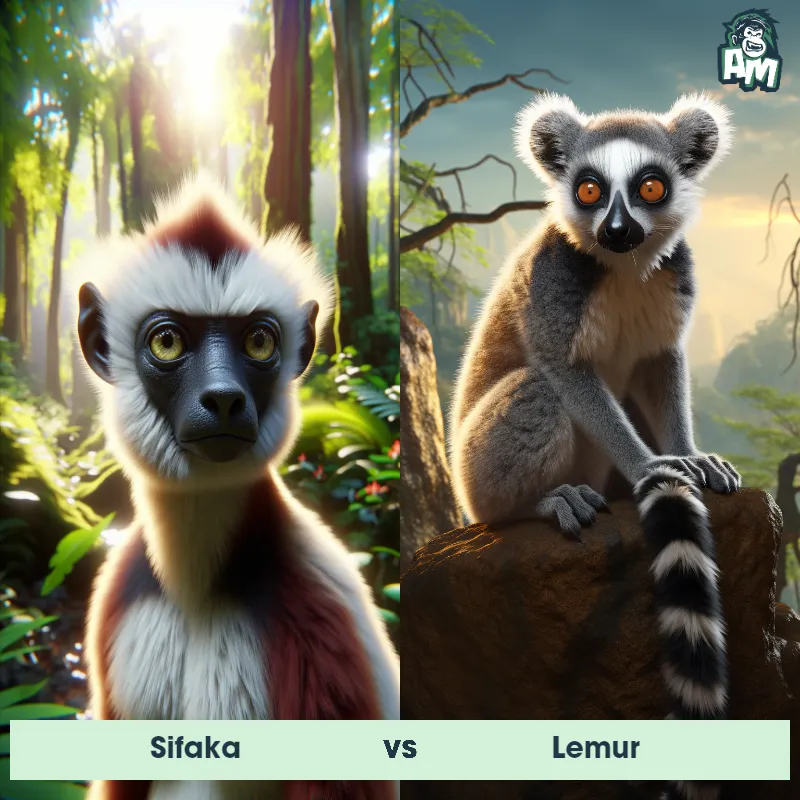The Lemur
The Lemur is a small primate native to the island of Madagascar. Known for its distinctive appearance, Lemurs have a pointed snout, large round eyes, and a long, bushy tail. They vary in size, with some species reaching up to 17 inches in length and weighing around 5 pounds. Most Lemurs are arboreal and spend the majority of their time in trees, using their strong limbs and long fingers to climb and leap from branch to branch. They have a diverse diet, consisting of fruits, leaves, bark, and sometimes even small insects.

| Lemur | |
|---|---|
| Size | Varies by species, 3.5 inches to 2.5 feet (9 cm to 76 cm) |
| Weight | Varies by species, 1 ounce to 20 pounds (30 grams to 9 kg) |
| Speed | 20mph (32km/h) |
| Key Strength | Agility and speed |
| Biggest Weakness | Small size and lack of aggressive behavior |
| Scientific Name | Lemuriformes |
| Family | Lemuridae |
| Habitat | Forests and jungles |
| Geography | Madagascar |
| Diet | Fruits, leaves, flowers, and insects |
| Lifespan | 16 years - 25 years |

The Lemur
The Lemur is a small primate native to the island of Madagascar. Known for its distinctive appearance, Lemurs have a pointed snout, large round eyes, and a long, bushy tail. They vary in size, with some species reaching up to 17 inches in length and weighing around 5 pounds. Most Lemurs are arboreal and spend the majority of their time in trees, using their strong limbs and long fingers to climb and leap from branch to branch. They have a diverse diet, consisting of fruits, leaves, bark, and sometimes even small insects.
Fun Fact: Lemurs are highly social animals and live in groups called troops, ranging in size from 15 to over 30 individuals, depending on the species.
| Lemur | |
|---|---|
| Size | Varies by species, 3.5 inches to 2.5 feet (9 cm to 76 cm) |
| Weight | Varies by species, 1 ounce to 20 pounds (30 grams to 9 kg) |
| Speed | 20mph (32km/h) |
| Key Strength | Agility and speed |
| Biggest Weakness | Small size and lack of aggressive behavior |
| Scientific Name | Lemuriformes |
| Family | Lemuridae |
| Habitat | Forests and jungles |
| Geography | Madagascar |
| Diet | Fruits, leaves, flowers, and insects |
| Lifespan | 16 years - 25 years |
Lemur Matchups
We use AI to simulate matchups between the Lemur and other animals. Our simulation considers size, strength, and natural predatory behaviors to determine the most likely outcome.
Lemur: Diet, Predators, Aggression, and Defensive Behaviors
What do Lemurs eat?
Lemurs are omnivores, meaning they have a varied diet that includes fruits, leaves, flowers, insects, and small vertebrates. They primarily feed on fruits and leaves, but will also supplement their diet with insects and small animals to ensure they receive all necessary nutrients.
Do Lemurs have any predators?
Yes, Lemurs have several predators in their natural habitat, including fossas, large snakes, and birds of prey. Fossas, in particular, are known to be skilled hunters of Lemurs and pose a significant threat to their population.
Are Lemurs aggressive?
Lemurs are not typically aggressive animals, but they can become territorial and exhibit aggression towards other Lemurs or predators when provoked. Most conflicts within a Lemur group are resolved through vocalizations and displays of dominance rather than physical aggression.
Do Lemurs fight?
While Lemurs may occasionally engage in physical altercations, they generally prefer to avoid conflict through intimidation or displays of dominance. Fighting is more common among males competing for mates or establishing hierarchy within a group.
How do Lemurs defend themselves?
Lemurs have several defense mechanisms to protect themselves from predators. They have sharp teeth and claws that they can use to fend off attackers, and they also rely on their agility and speed to escape danger. Some species of Lemurs are also capable of emitting a foul-smelling odor to deter predators.
What is the biggest weakness of Lemurs in a fight?
The biggest weakness of Lemurs in a fight is their relatively small size and lack of physical strength compared to many of their predators. While they can be agile and quick, their small stature makes them vulnerable in confrontations with larger, more powerful animals. Additionally, Lemurs may have difficulties fighting back effectively if outnumbered or facing a stronger opponent.
Fun Fact: Lemurs have a unique way of communicating. They use a combination of vocalizations, scent markings, and visual displays, such as exaggerated body movements and facial expressions, to convey messages within their troop.
Fun Fact: Lemurs have a specialized grooming claw on their second toe, which they use to meticulously groom their fur and remove any parasites. This grooming behavior not only helps maintain their cleanliness but also serves as a social bonding activity within the troop.



